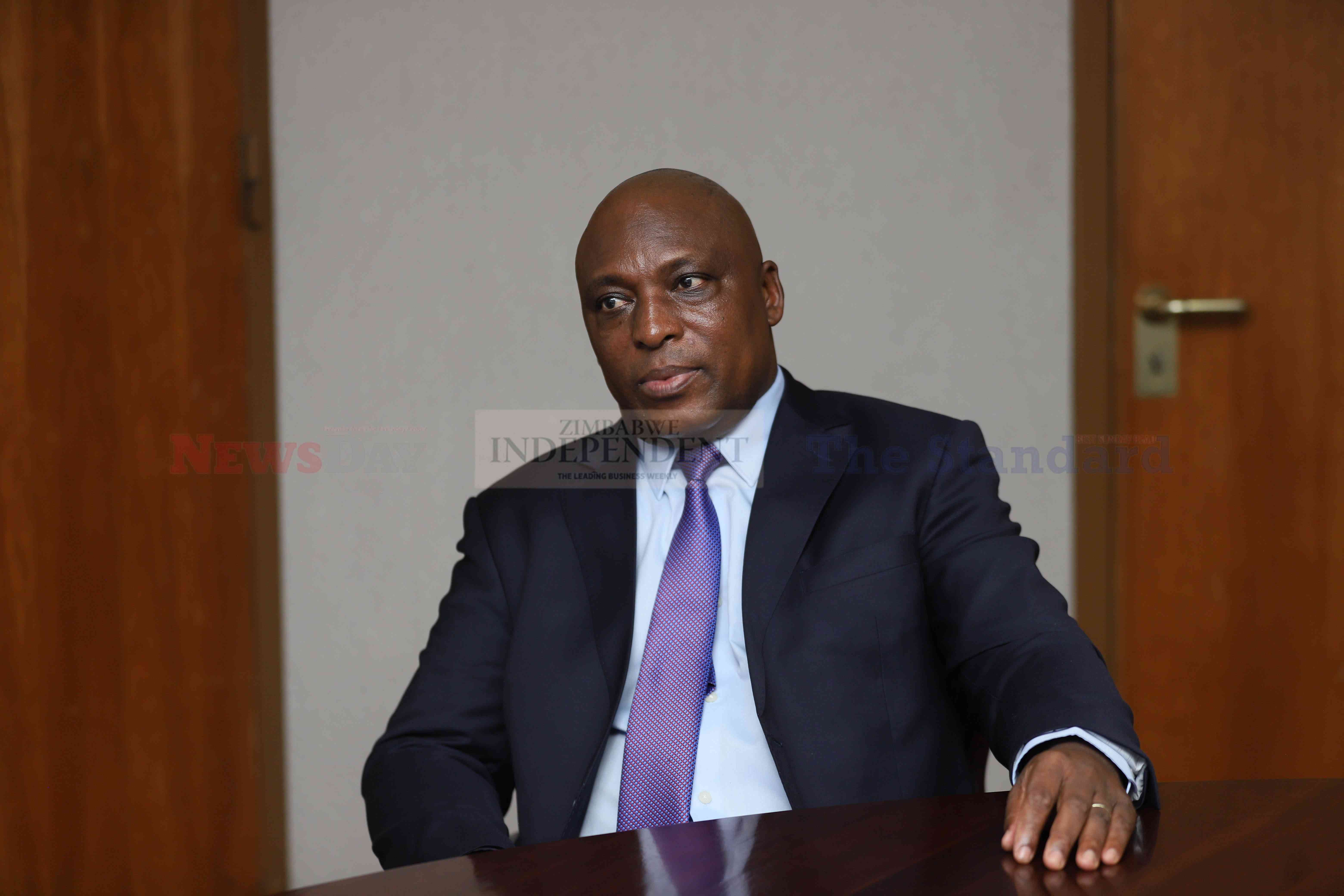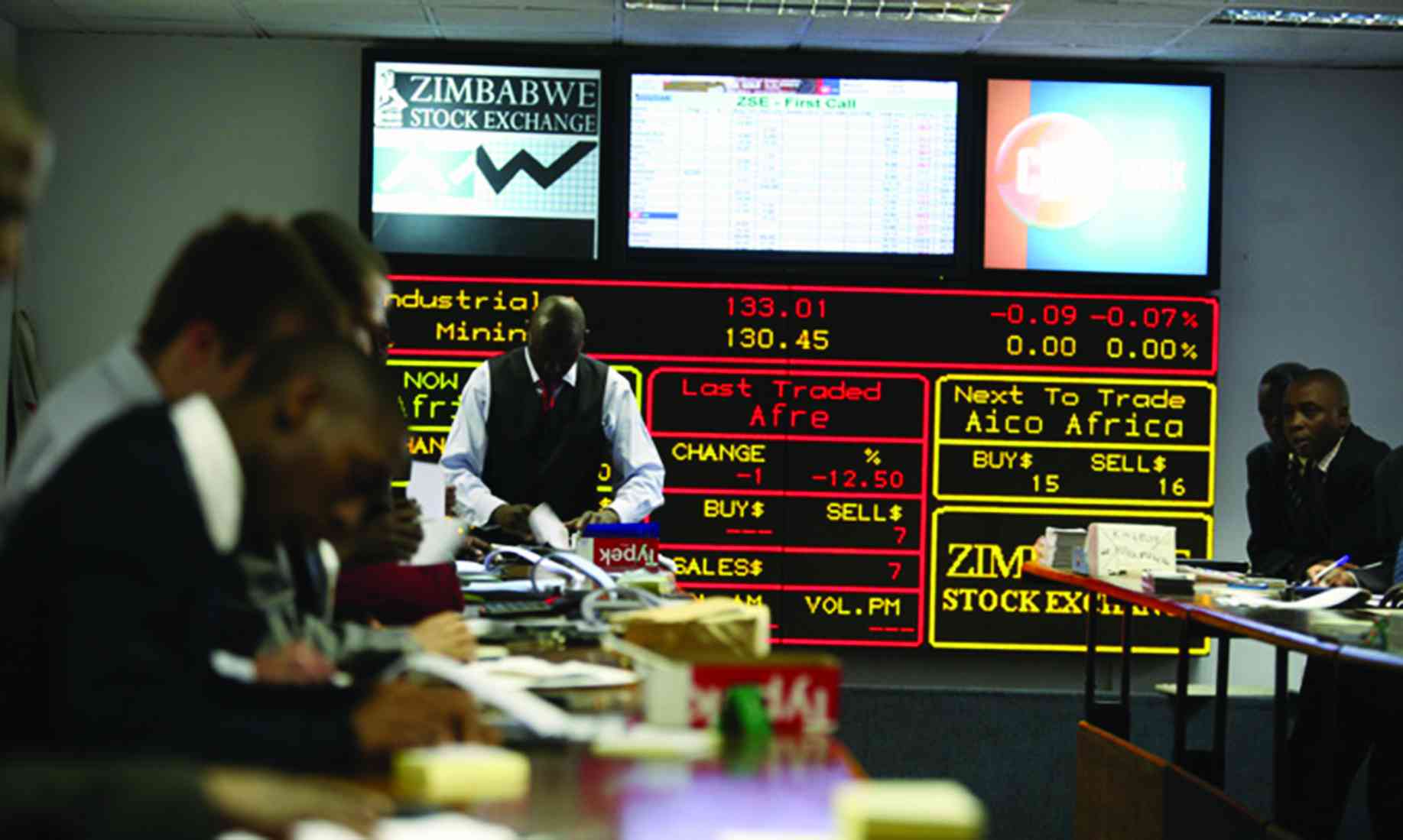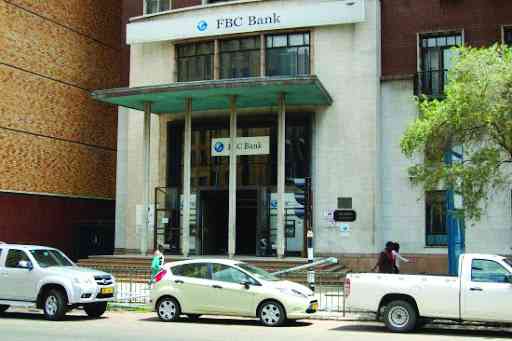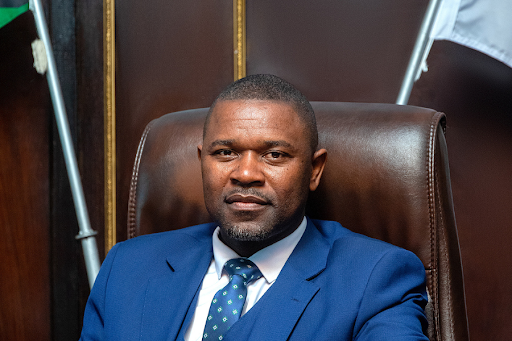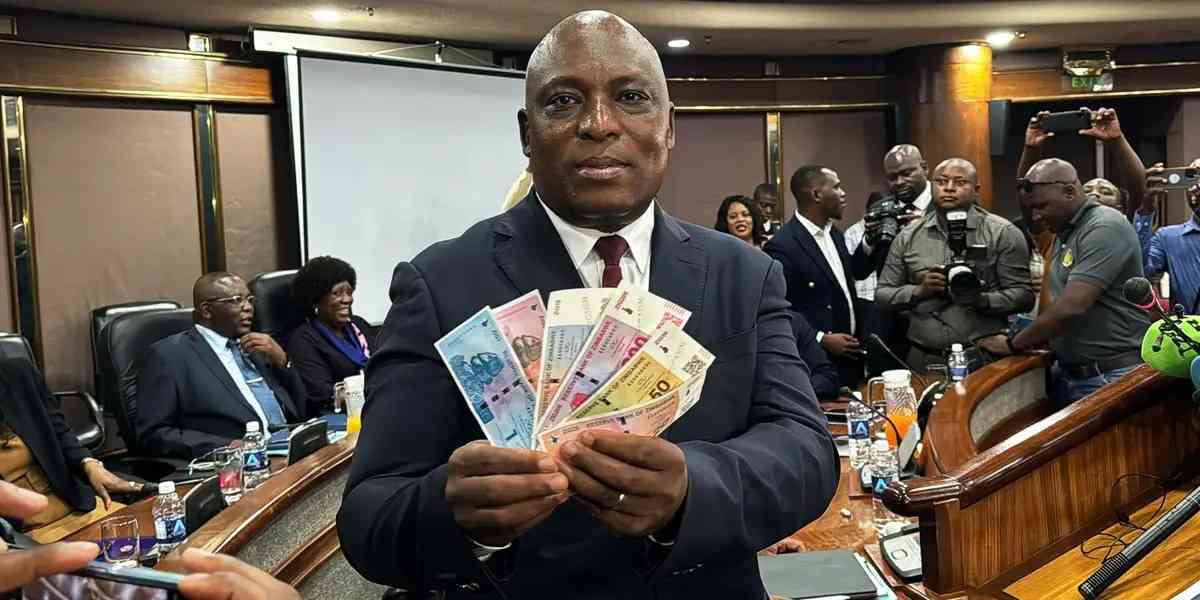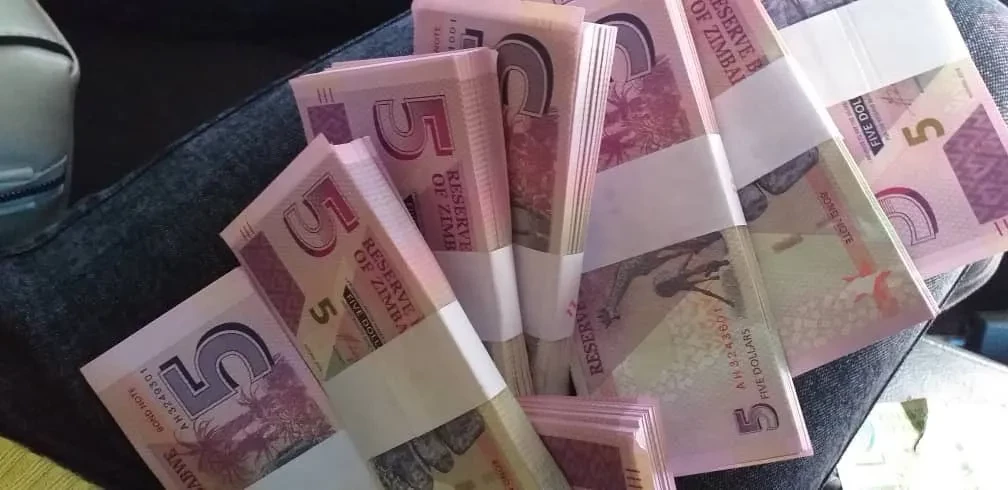
JUNE 24, 2019
Treasurey officially reintroduces the Zimbabwe dollar as ZWL ($) and abandons the pseudo currency, RTGS dollars, adopted in February of that year.
On its first day, the Zimdollar trades at $6,32 against the United States dollar while on the parallel market, the local currency had a drop off to $13,50, against the greenback, from the previous $12,20.
June 25, 2019 to March 28, 2020
The money supply rises nearly 228% to $48,4 billion from June 2019 to February 2020.
The rise in money supply leads to the Zimbabwe dollar depreciating 303,95% to US$1: $25,53 on the official market while depreciating by 222,22% to US$1:$43,50 on the parallel market.
March 29, 2020
The multi-currency regime returns.
- DPC pays out $139 million
- Zimdollar shortage hits market
- Nedbank Zim profit surges
- Editor's Memo : Clean up procurement corruption
Keep Reading
The reintroduction of the multi-currency regime leads to the ZWL appreciating against the greenback to US$1: $39 on the parallel market.
To allow the multi-currencies to circulate, the RBZ adopts a fixed exchange rate system of US$1: $25.
March 30 to May 18, 2020
The fixed exchange rate leads to an overvalued Zimbabwe dollar.
By May 18, the Zimbabwe dollar had depreciated to US$1:$57, a drop off of 48% from April 1, on the parallel forex market.
May 19, 2020
The $10 banknote is issued and starts circulating leading to an injection of cash as well as an increase in the money supply.
May 31, 2020
The money supply had grown by 14,41% to $59, 11 billion owing to the injection of the $10 banknotes.
First week of June 2020
The RBZ issues a $20 banknote meaning injecting more cash into the market thus increasing the money supply.
June 23, 2020
The RBZ abolishes the fixed exchange rate of US$1: $25 and introduces the Foreign Exchange Auction Market (FEAM).
Companies with external demands are allowed to bid for forex, mostly, United States dollars.
FEAM’s first day of trading sees the Zimbabwe dollar depreciating by 129,4% to US$1: $57,35 as a result of bidders placing higher bids while the local currency had a slight decline to US$1:$102 on the parallel market.
June 30, 2020
Money supply rose by 67,84% to $99,82 billion from the previous month as a result of the introduction of the $20 banknote.
The local currency gains to US$1: $100, on the parallel forex market, from the first day of the foreign currency auction.
July 1, 2020
The RBZ invites commercial banks, building societies, POSB, and IDBZ to subscribe to the government’s Treasury Bill Tender amounting to $500 000 000 increasing the money supply.
The Zimbabwe dollar fall 11,14% on the official forex market to US$1: $63,74 while on the parallel forex market, the Zimbabwe dollar stays at US$1: $100.
July 9, 2020
The central bank instructs all mobile banking providers to use ZimSwitch and this increases trading on the parallel forex market as dealers use the platform.
The Zimbabwe dollar on the official forex market drops to US$1: $65,87, owing to premiums in the parallel forex market.
July 13, 2020
Struggles in sourcing forex from the auction begin to show.
Resultantly, the Zimbabwe dollar moves in the wrong direction for the first time in four days to US$1: $90 on the parallel forex market.
July 24, 2020
Statutory Instrument (SI) 185 of 2020 is published directing businesses to display their prices in both the Zimbabwe dollar and foreign currency to prevent speculative pricing.
The Zimbabwe dollar depreciates to US$1: $95, on the parallel forex market, and US$1:$72,14 on the official foreign currency exchange, from July 13.
July 31, 2020
The Zimbabwe dollar drops slightly in the parallel forex market to US$1: $97 while the official counterpart showed a similar movement to US$1: $76,75.
August 21, 2020
The parallel market rate falls from the range of $95 to $120 to the greenback, at the commencement of the auction system, to a range of $85 to $110:US$1, according to the RBZ.
August 22 to December 31, 2020
On August 21, 2020, the RBZ standardised export retention threshold at 70% for all exporters and 80% on all locally generated domestic sales in foreign currency for local businesses.
This creates demand for foreign currency.
On the parallel forex market, the Zimbabwe dollar depreciated to US$1: $111.
January 7, 2021
The RBZ raises the export surrender requirement to 40%, from 30%, on all export receipts and local business respond by raising prices.
March 26, 2021
The Zimbabwe dollar is trading at US$1: $84,11 showing a slight downturn on the official forex market from December 2020 while falling to US$1: $115 from December 2020.
March 31, 2021
Money supply rises by 14,32% to $234,27 billion from the end of 2020 and the Zimbabwe dollar trades at US$1: $115 on the parallel forex market.
Officially, the forex rate takes a slight knock to US$1: $84,40.
July 6, 2021
The pressure from the money supply leads to the Zimbabwe dollar falling on the parallel forex market with smaller notes being rejected by the informal sector.
The central bank issues a $50 banknote and also injects $360 million.
July 31, 2021
The Zimbabwe dollar depreciates to US$1: $138 on the parallel forex market, a 20% drop-off while on the official market, the local currency slightly tumbles to US$1: $85,64.
August 1, 2021, and December 31, 2021
At this point, the Zimbabwe dollar has fallen by nearly 45% to $200, against the USD on the parallel forex market while tumbling by nearly 27% on the official market.
March 31, 2022
Money supply is up 23,92% to $589,09 billion from the end of 2021, leading to the Zimbabwe dollar depreciating 30% to US$1: $260 on the parallel forex market
To A2
while trading at US$1: $142,42 on the official market, a 31,06% drop.
April 5, 2022
Treasury issues a $100 banknote through Statutory Instrument (SI) 68A of 2022 as inflation starts to respond to the depreciation of the local currency.
April 6, 2022
The injection of a higher note triggers depreciation of the Zimbabwe dollar by 14,28% to US$1: $320 on the parallel forex market while the local currency traded at US$1: $145,87 on the official market.
April 22, 2022
The largest manufacturing business membership organization (BMO), the Confederation of Zimbabwe Industries (CZI) reveals that the country has essentially dollarised.
April 30, 2022
At the end of the month, the money supply is up about 13,7% to $671,37 billion, and resultantly, the Zimbabwe dollar falls by 38,5% to US$1: $360 on the parallel forex market while depreciating 12% to US$1: $159,34 on the official market.
May 7, 2022
Seeing that the Zimbabwe dollar is rapidly falling, Zimbabwe President Emmerson Mnangagwa issues a raft of measures to save the ailing local currency including levies on capital gains tax on stocks sold before 270 days among others.
May 8, 2022
The immediate effect of these measures saw the Zimbabwe dollar fall by nearly 24% to $445 against the USD on the parallel forex market.
Officially, the local currency had a bigger fall of 66,14% to $275,78 against the greenback.
May 17, 2022
After an uproar from the local business community, the RBZ lifts its suspension on bank lending allowing for borrowing to resume at an interest rate of 80%.
May 18, 2022
In response to the lifting of the suspension, the Zimbabwe dollar moves 1,19% to $425, from the previous day, against the greenback, on the parallel forex market. But, on the official forex market, the Zimbabwe dollar had a slight movement South to US$1:$286,76 from the previous day’s US$1:$284,93.
June 17, 2022
The RBZ reveals that there has been speculative borrowing fuelling the money supply both in the public and private sectors.
June 24, 2022
The RBZ raises the interest rates from 80% to 200% per annum to curb speculative borrowing to try and slow the growth of the money supply.
June 30, 2022
The RBZ measures do not slow the growth in the money supply as it ends the month 15,25% higher than May to $1,11 trillion, breaching the trillion-dollar mark for the first time since the local currency returned.
This growth sees the Zimbabwe dollar depreciate by 55,55% to $700, against the USD, compared to May on the parallel forex market. Officially, the local currency fell 23,02% to $370,96 against the USD.
July 25, 2022
The RBZ issues gold coins into the market to mop up excess liquidity and prevent the Zimbabwe dollar from crashing further.
July 31, 2022
The introduction of the gold coins increased money by 7,83% to $1,2 trillion, from June and resultantly the local currency fell by nearly 20% to $443,88, against the USD on the official market while tumbling by 50% to $1 050, breaching the $1 000 mark for the first time on the parallel market.
August 1 to August 3, 2022
The introduction of the gold coins tried to mop up some liquidity which saw the Zimbabwe dollar appreciating by nearly 24% to $800, against the United States dollar on the parallel forex market while on the official market appreciated by 3,19% to $458,06 against the USD.
August 4, 2022
Treasury Permanent Secretary George Guvamatanga announces that all government procurement has been suspended to allow for an investigation into how suppliers were pricing their goods and services.
August 11, 2022
The RBZ hikes the interest rates to 200% to curb speculative borrowing.
August 31, 2022
The suspension of government contracts and the raising of interest rates to 200% do nothing to curb the money supply as it rises 33,26% to $1,6 trillion.
As a result, the Zimbabwe dollar responds to the money supply by falling by nearly 2% to $815, against the USD on the parallel forex market. Officially, compared to the previous month, the local currency depreciated 23,19% to $546,82, against the USD.
October to December 2022
Money supply reaches $2,33 trillion, an increase of 109,9% from before the liquidity mopping measures first started on June 24.
Resultantly, the Zimbabwe dollar fell 57,14% to $1 100, against the greenback on the parallel forex market while recording 84,47% to $684,33 against the USD on the official market.
February 2, 2023
Interest rates are reviewed downwards to 150%, from 200%, because of pressure from businesses.
February 28, 2023
Money supply rises 25,32% to $2,92 trillion from the end of 2022 and this left the Zimbabwe dollar unchanged at US$1:ZWL1 150, against the USD on the parallel market from December 2022.
As had been the norm, the local currency depreciated further by 30% to $889,13 against the USD on the official market.
March 28, 2023
Interest rates are further lowered to 140% to allow for more borrowing.
March 31, 2023
The money supply rises 9,12% to $3,19 trillion and the Zimbabwe dollar depreciates by 4,58% to US$1:$$929,86 from the previous month. For the first time in months, the local currency depreciates on the parallel forex market quicker than the official comparative.
April 1 to May 7, 2023
During this period, the Zimbabwe dollar has a remarkable drop. The Zimbabwe dollar falls by 34,48% to US$1:$1 950 on the parallel market while recording a drop of 20% to US$1:$1 112,72 on the official market.
May 8, 2023
RBZ-backed gold tokens are injected into the market
May 11, 2023
Treasury issues several measures to save the falling ZWL which include allowing for 100% on all locally generated forex to reduce foreign currency demand.
May 12 to May 24, 2023
Bidding for the USD continues to rise on the forex auction.
The Zimbabwe dollar dropped by nearly 68% to US$1:$1 888,01, on May 24, marking one of the biggest single-day drops in the ZWL’s history and largest for 2023.
The ZWL falls by 105,12% to $4 000, against the USD, also marking the single biggest drop-off of the local currency for 2023 on the parallel market.
May 27, 2023
The Zimbabwe dollar has a slight drop off to US$1:$1 931,70, from May 24, on the official forex market while the local currency fell 5% to US$1:$4 200 on the parallel forex rate.
From Page 7
while trading at US$1: $142,42 on the official market, a 31,06% drop.
April 5, 2022
Treasury issues a $100 banknote through Statutory Instrument (SI) 68A of 2022 as inflation starts to respond to the depreciation of the local currency.
April 6, 2022
The injection of a higher note triggers depreciation of the Zimbabwe dollar by 14,28% to US$1: $320 on the parallel forex market while the local currency traded at US$1: $145,87 on the official market.
April 22, 2022
The largest manufacturing business membership organization (BMO), the Confederation of Zimbabwe Industries (CZI) reveals that the country has essentially dollarised.
April 30, 2022
At the end of the month, the money supply is up about 13,7% to $671,37 billion, and resultantly, the Zimbabwe dollar falls by 38,5% to US$1: $360 on the parallel forex market while depreciating 12% to US$1: $159,34 on the official market.
May 7, 2022
Seeing that the Zimbabwe dollar is rapidly falling, Zimbabwe President Emmerson Mnangagwa issues a raft of measures to save the ailing local currency including levies on capital gains tax on stocks sold before 270 days among others.
May 8, 2022
The immediate effect of these measures saw the Zimbabwe dollar fall by nearly 24% to $445 against the USD on the parallel forex market.
Officially, the local currency had a bigger fall of 66,14% to $275,78 against the greenback.
May 17, 2022
After an uproar from the local business community, the RBZ lifts its suspension on bank lending allowing for borrowing to resume at an interest rate of 80%.
May 18, 2022
In response to the lifting of the suspension, the Zimbabwe dollar moves 1,19% to $425, from the previous day, against the greenback, on the parallel forex market. But, on the official forex market, the Zimbabwe dollar had a slight movement South to US$1:$286,76 from the previous day’s US$1:$284,93.
June 17, 2022
The RBZ reveals that there has been speculative borrowing fuelling the money supply both in the public and private sectors.
June 24, 2022
The RBZ raises the interest rates from 80% to 200% per annum to curb speculative borrowing to try and slow the growth of the money supply.
June 30, 2022
The RBZ measures do not slow the growth in the money supply as it ends the month 15,25% higher than May to $1,11 trillion, breaching the trillion-dollar mark for the first time since the local currency returned.
This growth sees the Zimbabwe dollar depreciate by 55,55% to $700, against the USD, compared to May on the parallel forex market. Officially, the local currency fell 23,02% to $370,96 against the USD.
July 25, 2022
The RBZ issues gold coins into the market to mop up excess liquidity and prevent the Zimbabwe dollar from crashing further.
July 31, 2022
The introduction of the gold coins increased money by 7,83% to $1,2 trillion, from June and resultantly the local currency fell by nearly 20% to $443,88, against the USD on the official market while tumbling by 50% to $1 050, breaching the $1 000 mark for the first time on the parallel market.
August 1 to August 3, 2022
The introduction of the gold coins tried to mop up some liquidity which saw the Zimbabwe dollar appreciating by nearly 24% to $800, against the United States dollar on the parallel forex market while on the official market appreciated by 3,19% to $458,06 against the USD.
August 4, 2022
Treasury Permanent Secretary George Guvamatanga announces that all government procurement has been suspended to allow for an investigation into how suppliers were pricing their goods and services.
August 11, 2022
The RBZ hikes the interest rates to 200% to curb speculative borrowing.
August 31, 2022
The suspension of government contracts and the raising of interest rates to 200% do nothing to curb the money supply as it rises 33,26% to $1,6 trillion.
As a result, the Zimbabwe dollar responds to the money supply by falling by nearly 2% to $815, against the USD on the parallel forex market. Officially, compared to the previous month, the local currency depreciated 23,19% to $546,82, against the USD.
October to December 2022
Money supply reaches $2,33 trillion, an increase of 109,9% from before the liquidity mopping measures first started on June 24.
Resultantly, the Zimbabwe dollar fell 57,14% to $1 100, against the greenback on the parallel forex market while recording 84,47% to $684,33 against the USD on the official market.
February 2, 2023
Interest rates are reviewed downwards to 150%, from 200%, because of pressure from businesses.
February 28, 2023
Money supply rises 25,32% to $2,92 trillion from the end of 2022 and this left the Zimbabwe dollar unchanged at US$1:ZWL1 150, against the USD on the parallel market from December 2022.
As had been the norm, the local currency depreciated further by 30% to $889,13 against the USD on the official market.
March 28, 2023
Interest rates are further lowered to 140% to allow for more borrowing.
March 31, 2023
The money supply rises 9,12% to $3,19 trillion and the Zimbabwe dollar depreciates by 4,58% to US$1:$$929,86 from the previous month. For the first time in months, the local currency depreciates on the parallel forex market quicker than the official comparative.
April 1 to May 7, 2023
During this period, the Zimbabwe dollar has a remarkable drop. The Zimbabwe dollar falls by 34,48% to US$1:$1 950 on the parallel market while recording a drop of 20% to US$1:$1 112,72 on the official market.
May 8, 2023
RBZ-backed gold tokens are injected into the market
May 11, 2023
Treasury issues several measures to save the falling ZWL which include allowing for 100% on all locally generated forex to reduce foreign currency demand.
May 12 to May 24, 2023
Bidding for the USD continues to rise on the forex auction.
The Zimbabwe dollar dropped by nearly 68% to US$1:$1 888,01, on May 24, marking one of the biggest single-day drops in the ZWL’s history and largest for 2023.
The ZWL falls by 105,12% to $4 000, against the USD, also marking the single biggest drop-off of the local currency for 2023 on the parallel market.
May 27, 2023
The Zimbabwe dollar has a slight drop off to US$1:$1 931,70, from May 24, on the official forex market while the local currency fell 5% to US$1:$4 200 on the parallel forex rate.

